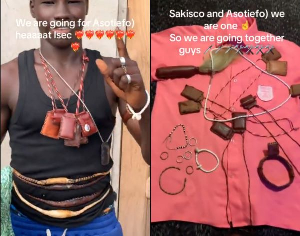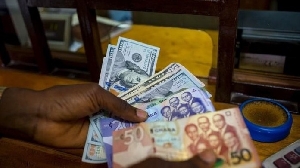Accra, Nov. 15, GNA - The Ministry of Fisheries would next year vigorously pursue and intensify fish farming (Aquaculture), to be able to meet the shortfall in fish production in the country. As one of the strategies, the Ministry would continue to train selected farmers in fish farming techniques and help them to establish their own farms to increase the overall fish production in the country. Mr Kwadwo Baah-Wiredu, Minister of Finance and Economic Planning, said this on Thursday when he read the 2008 Budget Statement in Parliament.
He said the provision of micro-credit to fisher folks and fish processors would be intensified to increase fish production and improve their income in communities such as: James Town; Teshie; Elmina; Moree; Senya Bereku; Keta; Dixcove; Axim; New Takoradi; Gomoa Fetteh; Dzemini; Tapa Abotoase and Ada.
The construction of a fish/shrimp processing plant designed to use the state-of-the-art technology would also commence.
To achieve these aims and many others, the Government allocated GH=A222,813,736 to the Ministry of Fisheries to promote sustainable and thriving fishing enterprises through research technological development and extension services to fishers, processors and fish mongers.
Out of the amount, the Government would provide GH=A21,656,027, while GH=A21,750,000 would be gained from the Internally Generated Fund with GH=A219,407,708 from Donor support. The Minister said a total amount of GH=A2740,000 was advanced to 3,500 fish processors throughout the country as micro-credit to increase fish processing and income levels. "A further, GH=A2500,000 was advanced as aquaculture credit for some existing and newly trained fish farmers for pond construction, fingerling and feed procurement to increase production of farmed fish.
Mr Baah-Wiredu noted that the Ministry also started the restocking of the Volta Lake, other reservoirs, dams and other water bodies in the three Northern Regions and had also initiated a restocking programme on the Okyereko Irrigation Project in the Ewutu Efutu Senya District in the Central Region to serve as a pilot project. The production of fingerlings, he said, started in the Ashaiman Aquaculture Demonstration Centre (AADC), after its extensive rehabilitation.
He expressed the expectation that the AADC would produce one million fingerlings annually to meet the ever-increasing demand for fingerlings by fish farmers in the country. The Pilot Aquaculture Centre (PAC) in Kona-Odumase in the Ashanti Region was upgraded to resume production. The Minister said to deal effectively with post harvest loses, the Ministry commissioned a study aimed at helping to select sites for the construction of ice plants and refrigeration facilities. The sod-cutting for the construction of cold stores for six coastal towns have been performed. Each of the cold stores would be equipped with other facilities such as a day-care centre, fish market and premix fuel depot.
Mr Baah-Wiredu said work for the construction of six ice plant and refrigeration facilities, which started in 2007, would be completed and inaugurated.
He said the draft National Fisheries Policy document had been completed and would be submitted for stakeholders' discussion and subsequent approval by Parliament. Mr Baah-Wiredu said the Ministry, in collaboration with district assemblies would reorganize and retool 90 out of the 189 Community Based Fisheries Management Committees (CBFMC) in the country for effective co-management of fisheries resources at the community level. Mr Baah-Wiredu announced the expected establishment of 50 district offices to be maintained and manned by fisheries scientists and technicians throughout the country over a three-year period. He named the construction works on a fish hatchery at Dormaa Ahenkro in the Brong Ahafo Region and works on the two fishing harbours and 10 landing sites for which survey, feasibility studies and designs had been completed.
All the landing sites and fishing harbours would have ancillary facilities such as cold store and blast freezing, cr=E8ches, premix-fuel stations, an administrative block and fish market. The existing landing site for inshore fishermen at Tema, he said would be upgraded to ensure that fish landed at the harbour met international standards.
Business News of Thursday, 15 November 2007
Source: GNA












